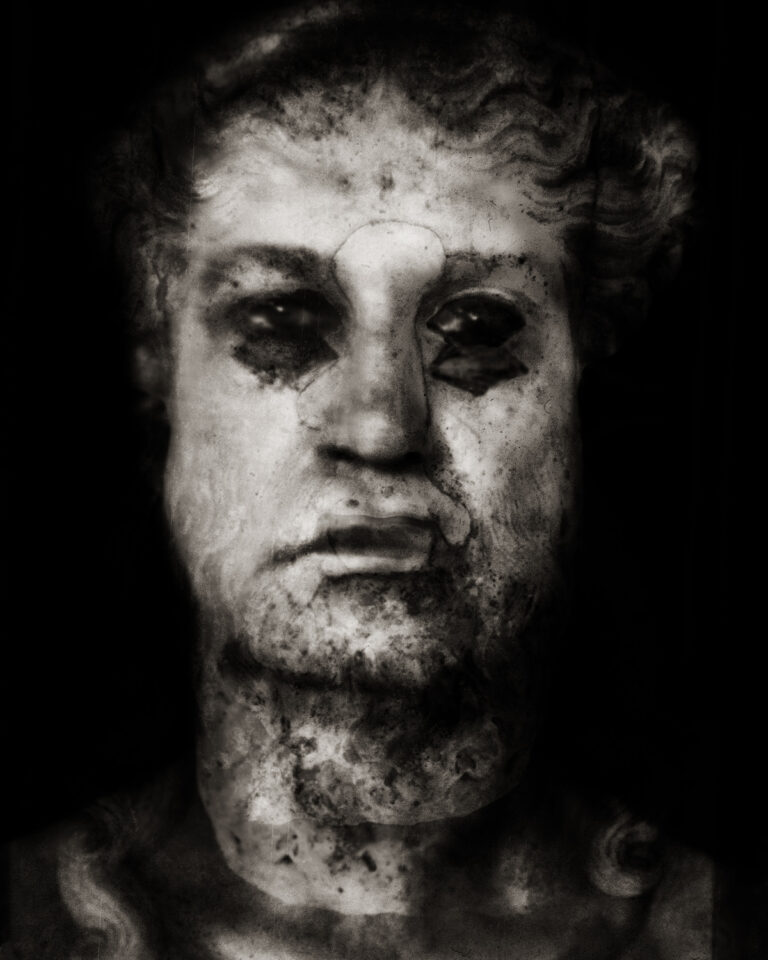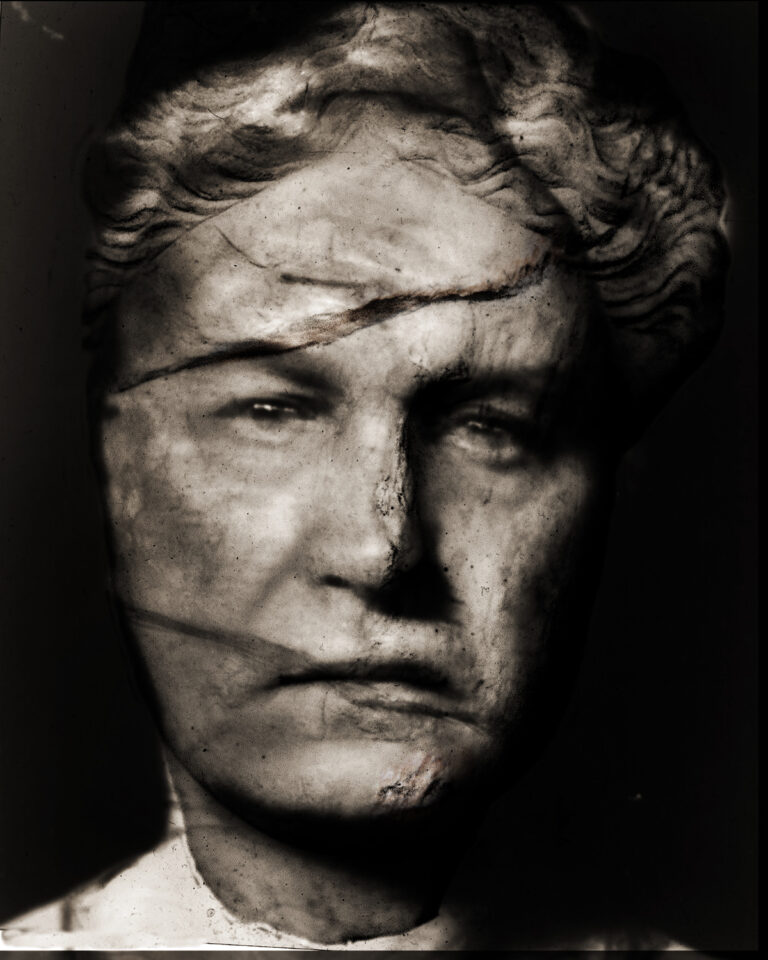The ‘Self’ & The ‘Other’ /
This ongoing series of self-portraits explores the construction of identity through the lens of ancient Roman portraiture. Blending self-portrait photography with classical references and draws on theories of the self and the other — exploring how identity is shaped through cultural ideals, memory, and inherited visual forms.
The Roman period was a turning point for portraiture — introducing hybrid and abstracted forms that reflected new value systems and social identities. By referencing this transitional moment, the work draws parallels with how we construct and perform identity today.
Using traditional 5″x4″ analogue paper negatives of myself, combined with hybrid digital negatives of ancient Roman sculptures and fragments, I reimagine the historical self-portrait. This echoes the Roman adaptation of earlier Greek (Hellenistic) art to express evolving ideas of selfhood and power.
Artists like Picasso and De Chirico turned to Greek and Roman art to confront the psychological and cultural uncertainties of their time. For me, these classical references offer a way to interrogate the contemporary self through the language of portraiture, mythology, and visual psychology — drawing loosely on Jungian concepts such as the persona, shadow, and archetype.
What David Eustace Said About This Work
“The work you’re doing is brilliant and original—so it doesn’t matter what others think. Personally, I think your self-portraits are incredibly intelligent, aesthetically beautiful, and interesting. So keep going—it’s refreshing to see such work.”
— David Eustace, Artist / Photographer
Imago-X Magazine
The Self and The Other project was proudly featured in Imago-X Magazine, gracing both the front and back covers as well as an extensive eight-page interview with images on the inside of the magazine. The interview delves into the inspirations, processes, and insights behind the series, offering readers a comprehensive look at the exploration of identity through the lens of ancient Roman portraiture.
Home » The ‘Self’ & The ‘Other’






























